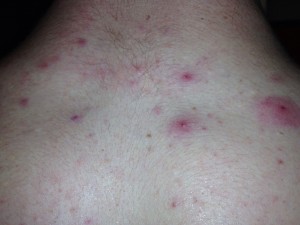Yes, clothes and towels can spread germs.
There are three main ways that germs are spread by clothes and towels:
when towels or bed linen are used by more than one person germs can spread between them
when someone handles dirty laundry they can spread germs onto their hands
when clothes are washed, germs can spread between items in the process of being washed
How do germs get onto clothes and towels?
Germs on clothes and towels can come from our own body. We all have bacteria on the surface of our skin, in our noses and in our gut. These are often harmless, but some can cause infection, particularly in people with skin problems or wounds.
Most germs cannot penetrate through normal skin but may harmlessly colonise it. Washing your hands regularly is likely to be significantly more important than clothes washing at preventing most infections.
Underwear is more likely to have germs on it than outer clothing like jumpers or trousers. Underwear contains germs from traces of faeces (poo) and from genital infections, such as thrush.
However, you can also pick up germs on your outer clothes, for example if you nurse someone with an illness or clean up vomit. Germs can also get onto outer clothing if you handle contaminated food or brush against a soiled object.
Most germs can survive on fabrics for some time. Read more about how long bacteria and viruses live outside the body.
How to stop clothes spreading germs
Normal washing of clothes will reduce the risk of germs being transmitted. In certain situations clothes should be washed at higher than normal temperatures and with a bleach based product to minimise the transmission risk as much as possible.
Washing high-risk items
If the items you are washing are likely to cause illness (high risk), they should be washed at 60C with a bleach-based product. Items are likely to cause illness if you have someone in your home who has an infectious illness. The following items are also high risk:
clothes soiled with vomit or faeces (including re-usable nappies)
sports clothes from high contact sports, such as judo or wrestling
cloths used in food preparation
healthcare workers’ uniforms
shared towels
clothing worn over a wound or infected skin
farmers’ clothing, especially during lambing season
Always remove any vomit or faeces from clothing before washing and flush it down the toilet. Heavily soiled items and items used in food preparation should be washed separately from other items.
You can protect yourself from infection by wearing gloves when handling high-risk laundry and always washing your hands thoroughly afterwards.
Washing everyday items
If you are washing lightly soiled everyday items that are not likely to cause illness, a normal wash with a detergent will be very effective at reducing the risk of transmitting any infection.
keep and wash heavily soiled clothes separately from other items
wash high risk items separately from other items
wash your hands after handling unwashed clothes



